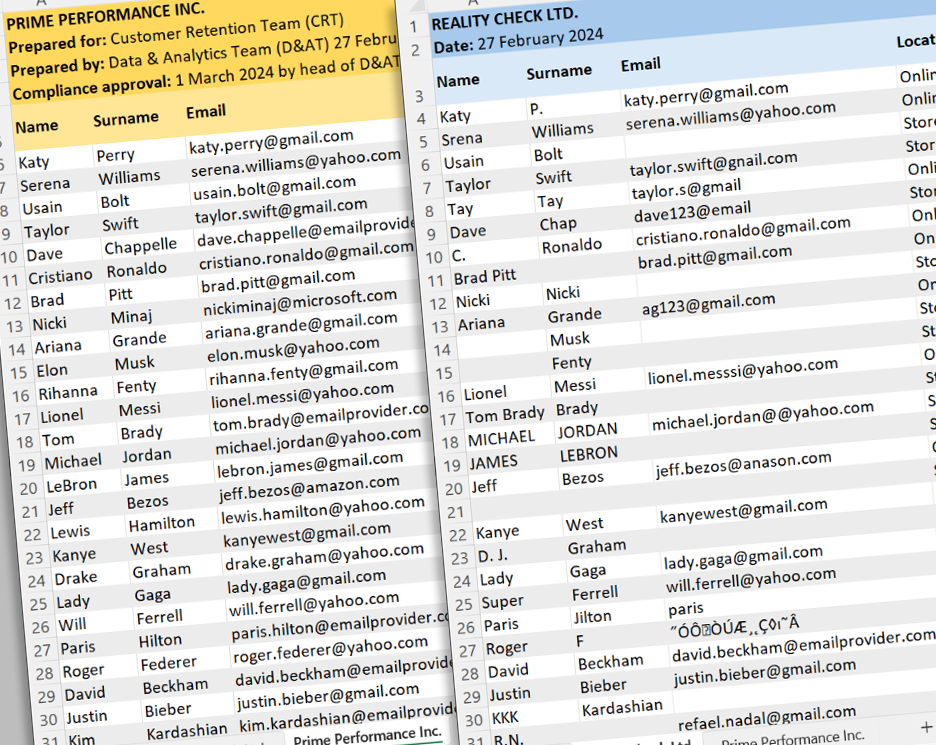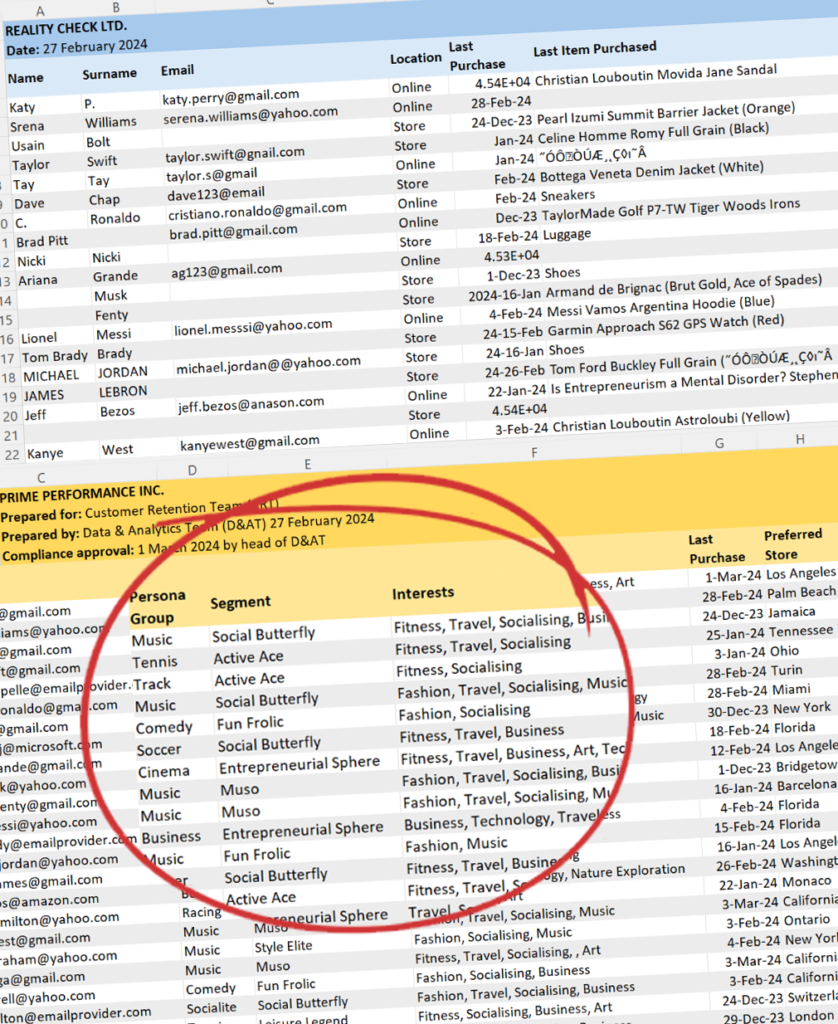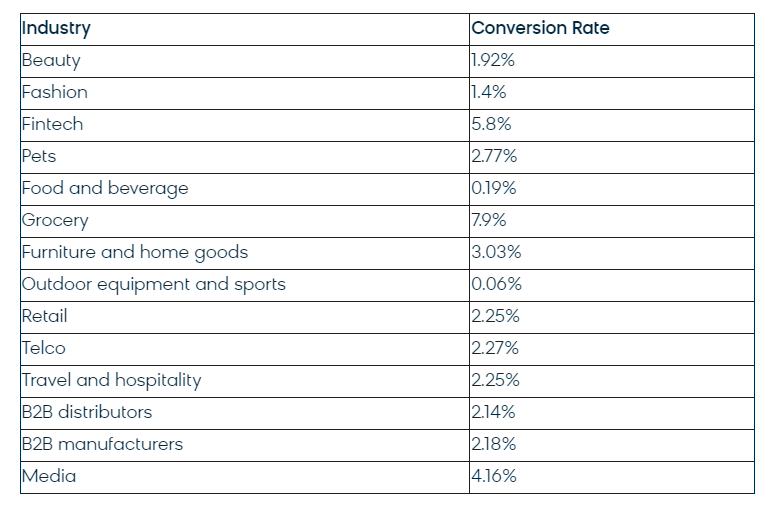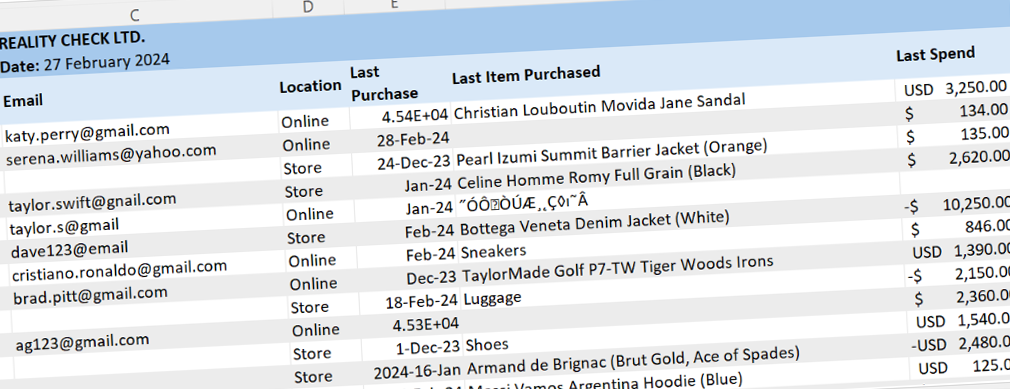Spot the three differences
Certainly the following Excels aren’t real. However, let’s look at the fictitious entities of ‘Reality Check Ltd.’ and ‘Prime Performance Inc.’. They help identify some of the typical challenges of using data in loyalty programs. Spot the three differences to uncover them.

Curious to see the data files? Access them here
1. Inaccuracy and decay

Reality Check Ltd, struggles with keeping up with the integrity of their databases. Outdated and inaccurate data is a major challenge for loyalty operators. Imagine you are preparing for a targeted email campaign, only to find out that a large portion of the emails in your database are invalid, alongside wrong names or inaccurate preferences.
It is estimated that on average more than 20%1 of marketing data contain invalid email addresses. People make an astonishing number of typos when trying to sign up. Plus, not every company has the right setup and do have “accept-all-emails” settings or don’t follow a verification process.
Additionally, at least 22%2 of an email list degrades yearly. This is not only because of human error. Disposable emails are a common way people avoid giving out their real email. In addition, people change jobs or decide to start using a new email. Consider that if you don’t have the right process only 50%3 of the accept-all setting emails are valid.
Fake or invalid email addresses result in high bounce rates and lost sales. This harsh reality is prevalent in most marketing databases and can derail even the best-laid plans.
2. Segmentation and targeting

Segmentation involves separating customers into subgroups with similar needs and preferences. This enables companies to more effectively tailor products and services, target communications, customise experiences, and add value to influence each segment’s behaviour. However, Reality Check Ltd. demonstrates segmentation is not as simple as it sounds.
A company could start by breaking down demographics. However, consider John Forsyth’s (ex-McKinsey) point. “You have two people, we know they’re the same age. We know they’re British citizens, and we know they’re of royal blood, one of them is Prince Charles. The other is Ozzy Osbourne, the Prince of Darkness. They’re in the same demographic segment, but it’s hard to imagine marketing to them the same way”4.
So, segmentation must aim to understand individual preferences more deeply. Yet, this is where things get complicated. For instance, a sophisticated company that neatly segments customer preferences, clustering similar purchases and campaign responses may not achieve as many conversions as they want. Even when they can define ‘the next best offer’ and structure highly targeted messages.
Real-life and customer behaviour are unpredictable. A perfectly timed discount email campaign that prompts someone to go shopping may not result in a sale. The shopper may not find the colour they want, or come across a competitor’s better offer. Or simply choose to try something else.
To put things in perspective, here are email marketing conversion rates across different industries presented in 2023 by Bloomreach5.

Even a company like Prime Performance Inc., which can also segment based on psychographics (lifestyle, personality, opinions, and interests), faces challenges. Regardless of a company’s capabilities, keeping pace remains difficult. This challenge arises from the ever-changing nature of consumer traits and the difficulty in obtaining readily available objective data.
Despite today’s advanced technology, a company requires the right talent that can navigate such uncertainties. They must make the best use of technology. But also need to stay on top of such dynamics if the company wants to reach its expectations. For example, consistently testing its marketing strategies, drawing insights, and applying them to optimise segments can help achieve this.
3. Usability & Accessibility

Reality Check Ltd.’s data example illustrates how unreliable data obstructs usability and reveals their limited access to gather data effectively. Most importantly, it highlights the common challenge that not all data can be utilised or accessed.
Simply put, the usability of data refers to the ease with which data can be accessed. But also understood, and employed for personalisation and to inform business decisions. However, to obtain data and turn it into useful insights is not always straightforward.
To begin with, data is delivered in a variety of ways and through various channels. This data then has to be extracted, processed, and made available. Typically, business analysts will handle this task. They will prepare and present it. However, data often resides in siloed systems, taking time to collate. Analysts also need to overcome various technical or administrative obstacles to access and analyse this data. Furthermore, data security and compliance are crucial before making the data available.
Consider the challenges posed by inconsistencies in number or date formats across merged datasets. Also consider the need for manual removal of special characters or symbols when importing data from various departments. Not to mention that data treatment and reporting practices may vary across different teams with no consistent policies. It is not surprising that only 45%6 of marketing professionals reported having a strategy for achieving unified marketing data.
Addressing these challenges requires a concerted effort from all stakeholders involved. The aim is to establish robust data management practices that prioritise usability and accessibility.
If data is not usable or available, it’s just not doing much good. But let’s face it, tackling every issue around data is not easy. So many organisations like Reality Check Ltd. are left scratching their heads wondering where to start.
Our loyalty consultants have helped global brands take the critical steps to design effective loyalty programs and support efficient management of databases, ensuring seamless integration and optimisation of customer data. Contact us to learn more about our comprehensive loyalty services and talk with our loyalty consultants to understand how to develop or optimise your data and loyalty program strategy.
- https://www.zerobounce.net/email-list-decay/ ↩︎
- https://www.dnb.com/perspectives/marketing-sales/master-data-in-the-time-of-covid-19.htm ↩︎
- https://getprospect.com/help-center/email-verification/accept-all-email-addresses ↩︎
- https://hbr.org/2014/07/what-you-need-to-know-about-segmentation ↩︎
- https://www.bloomreach.com/en/blog/2023/email-conversion-rate ↩︎
- http://chrome-extension//efaidnbmnnnibpcajpcglclefindmkaj/https://ascend2.com/wp-content/uploads/2020/04/Data-Management-Survey-Summary-Report-200411.pdf ↩︎

